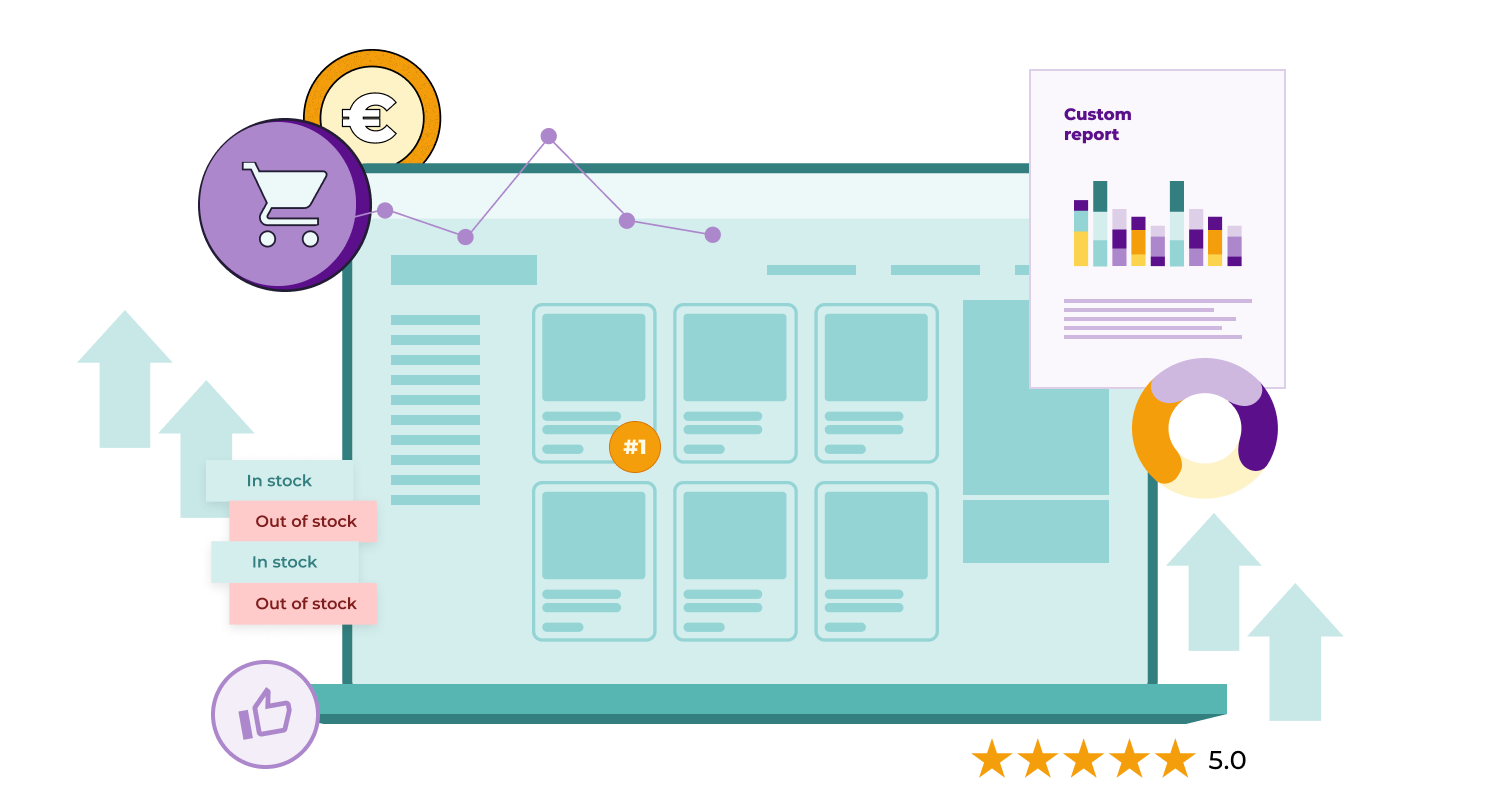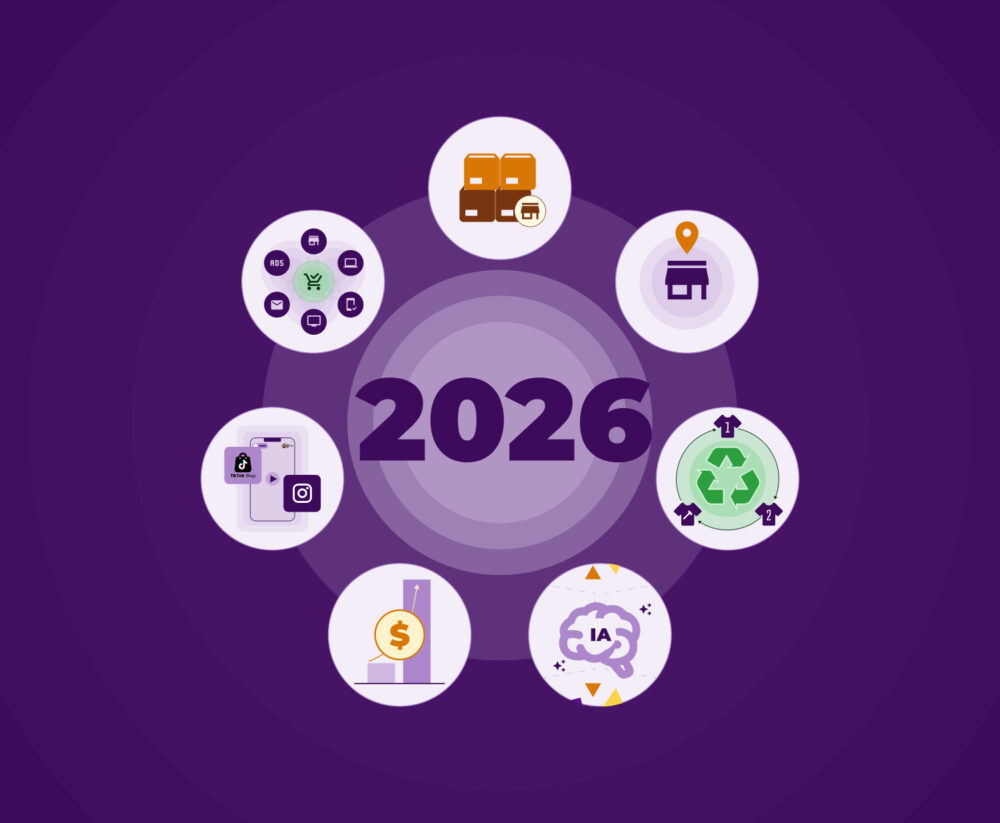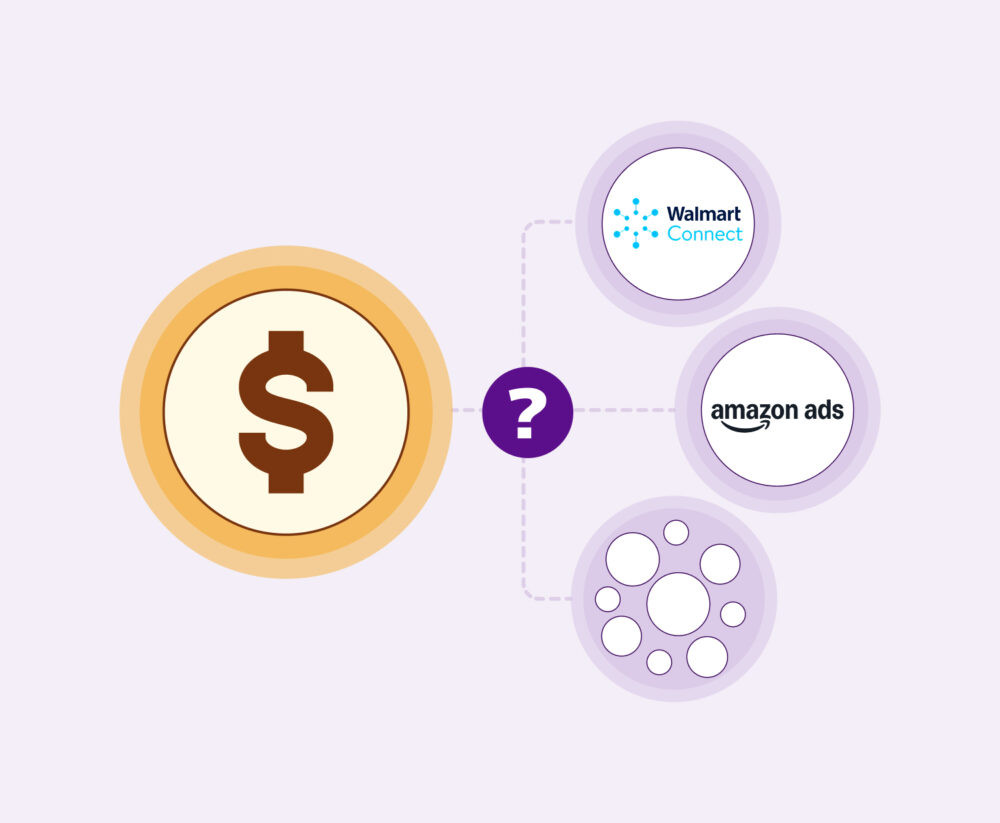Top 8 solutions for full Retail control
In the dynamic and competitive world of retail, having full control over operations is essential to stay ahead of the curve. Emerging technologies and advanced digital solutions are transforming the way brands, manufacturers and retailers operate, providing powerful tools for efficient and strategic business management.
As outlined in the “Global Retail Outlook 2024” report by Deloitte, today’s consumers are increasingly differentiated in their shopping preferences and what they want from brands, leading the industry to consider a paradigm shift from mass retail to micro retail, or from supply-driven to demand-driven retail.
Retailers and brands are going to have to start thinking of their consumers as individuals and, as a result, marketing, promotions and processes will need to be increasingly targeted, creating personalised experiences for customers, both in-store and online.
In this evolution, technology plays a crucial role for these companies to remain efficient and competitive. The main technological changes that will occur in the next 5 years will be related to improving forecasting efficiency, improving and adapting the overall shopping experience. Above all, the market will become more complex, more global and more competitive.
And everyone, retailers, brands and manufacturers alike, will need to embrace these changes with open arms and jump on the technology bandwagon if they want to excel in all areas.
Main existing solutions by strategy
Below we will explore the main technological solutions that can help you gain full control of your operations. From market analytics to demand planning:
1. Market reports
Market reports are the cornerstone of understanding the context in which a retail business operates. These reports provide valuable data on market trends, consumer behaviour, and competitor performance.
With this information, informed and strategic decisions can be made.
The benefits that market reports provide are as follows:
- Trend identification: Market reports allow you to identify emerging trends and adjust your product offerings accordingly.
- Competitive benchmarking: Comparing performance against competitors helps identify areas for improvement and opportunities for differentiation.
- Informed decision making: Relying on accurate data to make strategic decisions reduces risk and increases the likelihood of success.
The tools we would highlight as top in this first section are:
- Nielsen: Nielsen is a leading global measurement and data analytics company, specialising primarily in providing audience insights and audience-based media planning. It offers solutions that help companies understand what consumers watch and buy by collecting and analysing audience and sales data. Nielsen is a market analytics giant, and its services range from market research and audience analysis to strategic consulting. All of this helps brands make informed decisions and optimise their marketing and sales strategies.
- NielsenIQ: NielsenIQ is part of the Nielsen giant, and specialises in offering broader and more sophisticated analytics solutions, which aim to provide deep, data-driven insights to help companies make informed strategic decisions. Its reports include data on sales, consumer behaviour, and competitor analysis, enabling brands to fine-tune their marketing and sales strategies.
While at first glance these 2 solutions may appear similar, each has a particular focus that sets them apart. While Nielsen focuses primarily on audience measurement, Nielsen IQ goes a step further and offers intelligent, strategic analytics to drive business success.
Both are powerful tools, but each has its unique value in the retail and market reporting landscape.
It is true that these types of reports are usually not accessible to all companies or situations. They are expensive and it is sometimes difficult to extract their value, with a lot of further work required to filter and analyse the data.
2. Digital Shelf analytics and monitoring
Digital Shelf analytics focuses on understanding, analysing and optimising the presence of products on e-commerce platforms. It includes improving the visibility of products, the quality of descriptions and the relevance of images.
The benefits of using a Digital Shelf Analytics tool for brands, manufacturers and retailers are very clear:
- Real-time view of assortments: As offline and online increasingly run in parallel, assortments represented in online channels allow us to see, in real time, how they are moving in terms of composition, price, promotion and much more. This has historically not been possible.
- Improved product visibility:Product pages in e-commerce are the “new packaging”. By optimising product pages, visibility and conversion rates on e-commerce platforms can be increased. In addition, this has a strong impact also on the offline channel due to omni-channel shopping behaviours.
- Customer perception management:Digital Shelf Analytics tools help you understand what the customer thinks of your brand, being able to make an extensive reviews of product reviews, and triggering real-time solutions that improve the perception of your brand and positively influence the purchasing decisions of future customers.
- React in time: Constant monitoring and data analysis allows retailers and brands to make daily decisions, such as reacting to a product launch, a competitor’s promotion, or a stock out, and thus not leave turnover on the table.
The 2 tools that we would highlight as top tools for digital shelf analysis are:
- Profitero: Profitero is an e-commerce analytics platform that helps brands and retailers improve their online performance by monitoring and optimising their digital presence. Among the solutions offered by this company is the Digital Shelf analysis. With this tool you can analyse, measure and improve your product positioning and performance. All of this is based on digital shelf data from more than 1000 retailers in 70 countries. As of 2022, it is part of Publicis Groupe, one of the oldest and largest advertising companies in the world.
- Flipflow: Flipflow’s Digital Shelf 360 solution helps you control and optimise your positioning and brand image to make an impact across all sales channels. Improve the visibility of your products and boost their sell-out. Get information on paid ads within the websites or marketplaces you want to monitor and their placements. Unlimited number of sites to monitor and countries to reach. In addition, all your teams will be armed with this tool and the insights needed to grow the business exponentially. And you will also be able to integrate proprietary company information.
3. Pricing monitoring
We continue with price monitoring, which is a crucial strategy to stay competitive in the market. This practice involves keeping a close eye on competitors’ prices and adjusting your own prices accordingly. Using this you will attract consumers without sacrificing profit margins.
The benefits of monitoring prices and promotions are:
- Competitive pricing: Keeping prices competitive helps attract and retain consumers, increasing sales and market share.
- Dynamic price adjustments: The ability to adjust prices in real time allows you to react quickly to market fluctuations and competitors’ strategies.
- Margin maximisation: Monitoring tools help to find the optimal balance between competitive pricing and profit margins.
Outstanding solutions within price monitoring:
- Minderest: Minderest is a suite of pricing tools for monitoring prices and assortments. It provides advanced tools that allow you to track the prices of your own products and those of your competitors in real time. Its solutions include price, availability, and promotion analysis, allowing companies to adjust their pricing strategies, maintain competitiveness and optimise profit margins.
- Flipflow: Using flipflow’s platform, you will not only find a Digital Shelf 360 solution. You will also be able to monitor your prices and promotions, as well as those of your competitors. And also stocks and assortments, marketplaces and sellers, brand compliance, and much more, at shop level and in real time. With flipflow’s pricing and promotions functionality you will make the best pricing and promotions decisions, having daily control of your distributors and competitors. You will also optimise your sales team’s time, save costs, and reduce channel conflicts.
4. Price sweeps and store checks
Price beats and store checks are essential to understand how products are presented in physical shops and to ensure that prices are competitive. This practice involves collecting data on prices, product availability, and presentation at the point of sale.
The benefits of conducting physical price sweeps are:
- Clear view of the point of sale: Obtain accurate data on product presentation and pricing in brick and mortar shops.
- Ensuring consistency: Regular audits ensure that products are presented consistently and attractively in all shops.
- Improving customer experience: By understanding and optimising product presentation, retailers can improve the shopping experience and increase customer satisfaction.
Solutions to these price sweeps and in-store checks include:
- Having a strong in-house sales network that is dedicated on a day-to-day basis, among other things, to go to each assigned shop within its sales area and carry out these actions.
- Specialised companies such as Winche Redes Comerciales, a commercial outsourcing company, focused on the multichannel sales force. It has a large team of specialised professionals who go around the shops, with the agreed periodicity, carrying out manual checks on shops. Such companies know several verticals well, so they are able to expand their screenings.
This method of price and channel control has traditionally been widely used. It is true that it involves, on the one hand, a large cost if outsourced and, on the other hand, a considerable opportunity cost if it is internalised. However, it also has clear benefits, such as understanding the specific product situation in the shop.
The current trend in large companies in various sectors is to opt for a first layer of control with technology that allows this data to be available on a daily basis. And, as a second layer, to use physical store checks for more ad hoc checks, giving that extra data from the physical environment that is not replaceable. This approach provides a huge improvement in efficiency, more analytical power, reactivity and considerable cost savings for brands.
5. Sellout data analysis
Sellout data analysis focuses on understanding which products are selling and why. This information is crucial for optimising inventories, adjusting marketing and sales strategies, and improving operational efficiency.
What are the benefits of using a sellout analysis tool?
- Inventory optimisation: Understanding which products are selling allows you to optimise stock levels, reducing costs and improving product availability.
- Adjusting marketing strategies: Analysis of sellout data provides insights into the effectiveness of marketing campaigns and allows you to adjust strategies to maximise impact.
We would like to highlight the following solution in terms of sellout data analysis:
- Kantar: Kantar is a leading global data, insights and consulting company that helps companies better understand their consumers and markets. It offers a wide range of services, including market research, consumer behaviour analysis, and audience measurement. Using advanced data and analytical technologies, Kantar provides deep insights that enable brands to make informed decisions, optimise their marketing strategies and improve their commercial performance across multiple sectors and geographies.
6. Control Retail Media
As we have already explained in previous articles, Retail Media is advertising on e-commerce platforms, being the 3rd wave of advertising and the future for FMCG companies. This type of advertising is crucial to increase the visibility and sales of products online, especially in a saturated and competitive market.
Running retail media campaigns has a number of benefits for brands:
- Increased product visibility: Retail Media campaigns improve product visibility on e-commerce platforms, attracting more consumers and increasing sales.
- Segmented and targeted advertising: The ability to segment audiences and therefore target ads to specific audiences maximises the impact of advertising campaigns.
- Optimising ROI: Retail Media monitoring tools help brands to optimise their advertising campaigns, maximising ROI and improving the efficiency of ad spend.
On the other hand, for retailers, it is a new and very profitable source of revenue.
If we talk about controlling Retail Media, we have to think about 2 aspects: first, campaign management platforms and, once launched, monitoring. We are going to highlight solutions for these two moments in the control of Retail Media.
Featured tools for retail media management:
- Criteo: Criteo is a retail media platform that enables marketers and media owners to achieve better e-commerce results. It offers advertising solutions for brands that help increase visibility and sales of products online. It connects brands, through its platform, with media owners where they can advertise. Its platform also uses advanced algorithms to optimise advertising campaigns and maximise return on investment.
- Platforms such as Amazon Ads:Amazon’s advertising platform provides tools to manage and optimise advertising campaigns within its marketplace. The tool allows you to create and manage ads targeted to specific audiences, improving visibility and product sales. Amazon Ads can connect you with customers wherever they are and provide you with the information you need to drive results. With its data, reach and premium entertainment properties, brands can connect with relevant audiences in the right places on Amazon, and other places where they spend their time.
Other major retailers have also developed their own Retail Media platforms, such as Walmart with Walmart Connect.
Outstanding solutions for Retail Media monitoring:
- Flipflow: As we have already discussed in other sections of this guide to solutions for total retail control, flipflow is an intelligent market analytics platform that is transforming retail. And one of its strengths is Retail Media Monitoring. Flipflow allows you to monitor retail media campaigns by page or search term, in real time and on any website in the world. You can also monitor the same data but for your competitors, so you know exactly what they are doing in retail media. Using this platform, your marketing teams and marketplace managers will have valuable information to optimise ad spend and brand visibility to the maximum detail. And you’ll be able to measure the ROI of your retail media campaigns with precision, so you know where to keep investing and what’s making you the most profit.
7. Product Information Management (PIM)
Product information management is essential to ensure that your product data is accurate and consistent across all platforms. A PIM system centralises and manages all product information, from descriptions and specifications to images and pricing.
This type of system ensures that product information is consistent and accurate across all platforms. And this improves customer experience and operational efficiency.
- Efficient content management: Centralised data management reduces the time and effort required to keep your product information up to date.
- Improved customer experience: Providing accurate and engaging product information improves customer confidence and satisfaction, which can increase sales and customer loyalty.
There are many solutions for managing product information, but we would like to highlight the following:
- Sales Layer: Sales Layer is the most agile Product Information Manager for creating personalised product experiences in the marketplace. The SaaS-based platform adopts an intuitive user interface to generate catalogues of millions of SKUs, fully connected to marketplaces, distributors and manufacturers. For retailers and business owners, Sales Layer provides a single source of product information. With this PIM your brand will be more consistent, housing all your product information, images and assets on a single platform.
- Salsify: Salsify offers PIM solutions that enable retailers to manage and distribute product information efficiently. The tool helps improve the quality of product data, making it easier to create and manage engaging and accurate product content.
8. Demand planning
Crucial for forecasting consumer needs and adjusting inventory strategies accordingly. Demand planning tools use historical data and advanced algorithms to predict future demand. This helps to optimise inventory levels and reduce costs.
What are the benefits of using a solution to help you plan demand?
- Inventory optimisation: Accurate demand planning allows retailers to maintain optimal stock levels, reducing costs and improving product availability.
- Reduced costs: By accurately forecasting demand, costs associated with excess inventory and product shortages can be reduced.
- Improved customer satisfaction: Ensuring that products are available when customers need them improves customer satisfaction and can increase customer loyalty.
The 2 solutions that we want to highlight for demand planning are:
- Imperia: Demand, production and purchasing planning software. It is a simple and fast tool that improves forecasts, optimises service and increases sales. Using this tool you can manage with end-to-end vision your entire demand planning process, as well as launch your sales forecasts with advanced calculation models and analyse their deviations.
- Stockagile: All-in-one tool that efficiently connects all sales channels, physical and online. It provides multiple functionalities for optimal business management. With this software you will have total control of your inventory, from purchases to automatic replenishment.

Conclusion
Having full retail control involves using a combination of advanced technology solutions that address different aspects of managing and optimising operations. From price recording to retail media monitoring, each of these tools plays a crucial role in the success of a retail business. By implementing these solutions, manufacturers, brands and retailers will be able to make more informed decisions, optimise their operations and ultimately improve the customer experience and increase sales.
The future of retail lies in the adoption of technologies that enable more efficient management, a better understanding of the market and the consumer, and real-time responsiveness to changes in the environment.
As we said at the beginning, companies that invest in these solutions will be better positioned to face the challenges, take advantage of market opportunities and achieve total control of retail.




